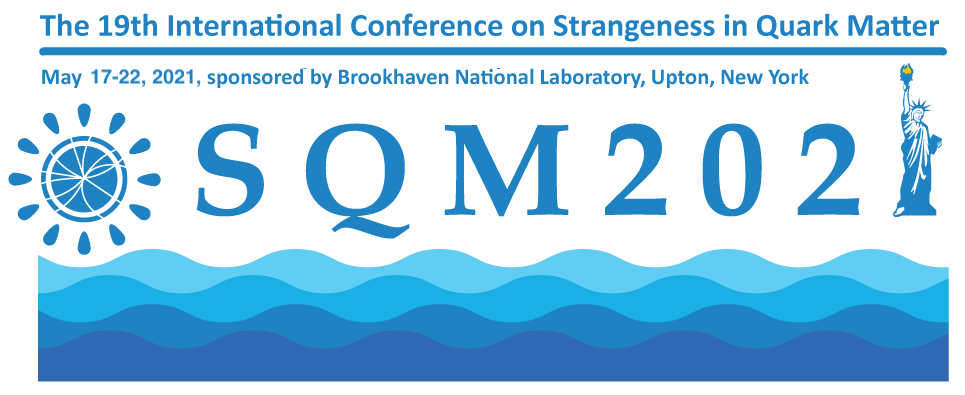Speakers
Description
We suggest to explore an entirely new method to experimentally and theoretically study the phase diagram of strongly interacting matter based on the triple nuclear collisions (TNC). The key element of such experiments is to use the superthin solid target operated in the core of two colliding beams [1]. Our approach is based on the successful data-taking in the LHCb experiment in which the colliding and fixed gaseous target modes are running simultaneously [2]. The estimates show that under the high luminosity LHC conditions the TNC rate might reach an observable level of 1 event over 1000 s.
We simulated the TNC using the UrQMD 3.4 model [3, 4] at the beam center-of-mass collision energies √s = 200 GeV and √s = 2.76 TeV. We found that in the most central and simultaneous TNC the initial baryonic charge density is about 3 times higher than the one achieved in the usual binary nuclear collisions at the same energies. As a consequence, a production of protons and Λ-hyperons is increased by 2 and 1.5 respectively, respectively, while a sizable suppression of their antiparticles is observed.
At the beam center-of-mass collision energies of 10-40 GeV, the production of protons as well as of Λ-hyperons is enhanced approximately by a factor of 2.2 compared to the binary collisions, while the positive kaons are enhanced by 1.5. Hence we conclude that in the TNC method it is possible to create substantially denser strange matter than in the binary collisions. We argue that this method at lower energies can be of principal importance for searching the (tri)critical endpoint of the QCD phase diagram.
References:
[1] V. Pugatch, International Conference "CERN-Ukraine co-operation: current state and prospects“ Kharkiv. 15-May-2018; LHCb-TALK-2018-557.
[2] LHCb Collaboration. SMOG2.Tecnical Design Report. CERN-LHCC-2019-005l.
[3] S.A. Bass et al., Prog. Part. Nucl. Phys. 41 (1998), 225-370.
[4] M. Bleicher et al., J. Phys. G 25 (1999), 1859-1896.




